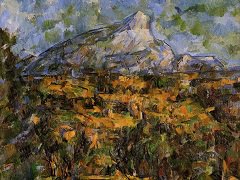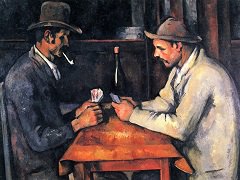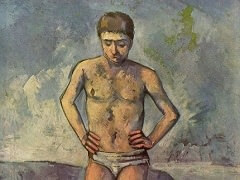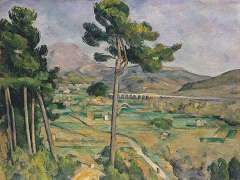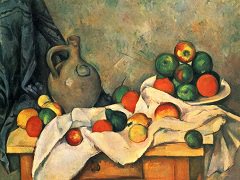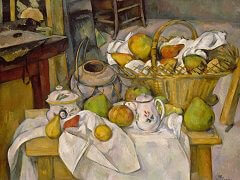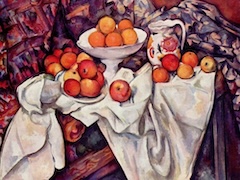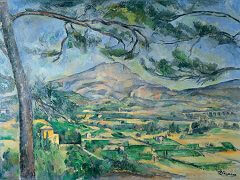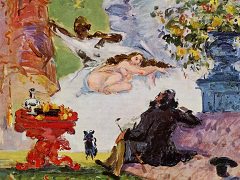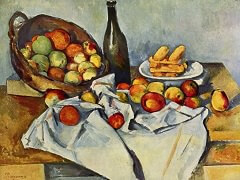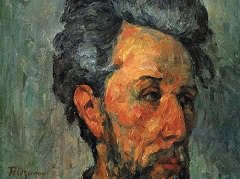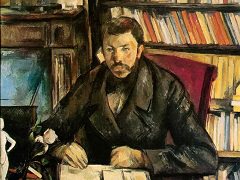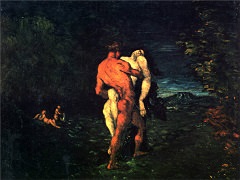Pierrot and Harlequin, 1888 - by Paul Cezanne
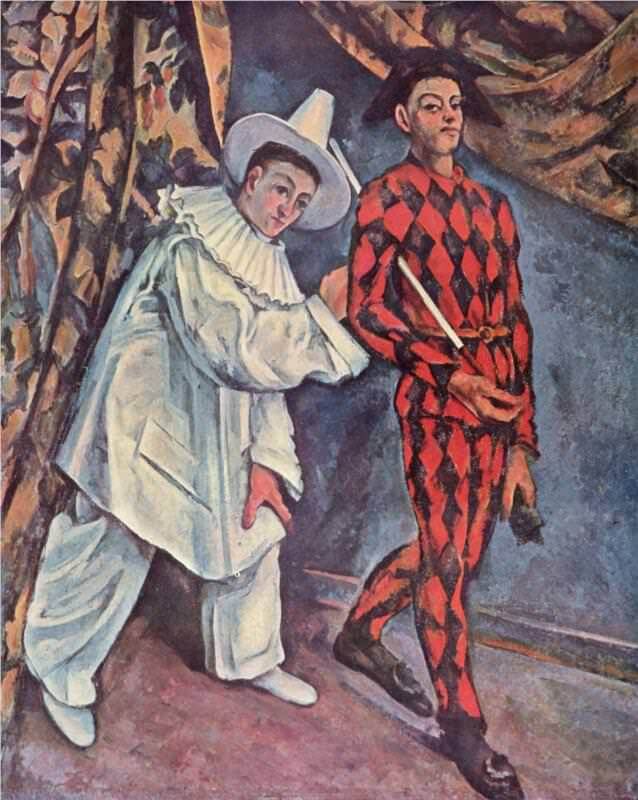
In his youth, Cezanne, like Zola, loved the carnival, which led to all kinds of festivities in his home town of Aix-en-Provence. The youngsters would enthusiastically take part in all the masquerades, pageants and processions. Perhaps it was in remembrance of those happy days that Cezanne asked his son to pose for him dressed as Harlequin and proudly leading an imaginary procession, while Louis Guillaume, in Pierrot's costume, follows in his footsteps and looks as if he is about to steal Harlequin's baton. According to Paul, this scene was painted in Paris in the studio in the rue du Val-de-Grace, which Cezanne occupied from late 1888. Before beginning this particular work, Cezanne had produced many drawings inspired by the commedia dell'arte and three separate paintings of Harlequin.
In contrasting costumes, Pierrot and Harlequin set each other off, making a lively scene that is exceptional among Cezanne's compositions of several figures, in which the protagonists are usually indifferent to each other and appear almost as if they were alone. Here, the looks and gestures reveal a close relationship between the two young people.
The deliberate flouting of the laws of perspective, with the floor coming down steeply, emphasizes the expression of the attitudes and accounts for the distortions. For example, Harlequin's feet have to be lengthened so that he can stand. The two characters seem to be emerging from the wings of a theatre, and this is suggested by the large drapes of the same leafy material that Cezanne used in his still lifes. The artist worked especially carefully on the fabric and costumes.
Pierrot's outfit, baggy and immaculate, reflects all the surrounding colours and, in turn, illuminates the boy's face. Next to him, Harlequin's slim figure, dressed in a red and blue check costume, brings a warm, cheerful note to the painting. A certain degree of humour, uncommon m Cezanne's works, emanates from this carnival scene.


